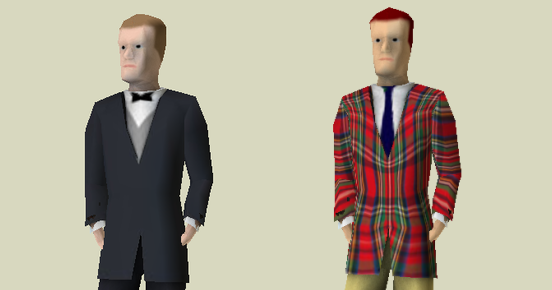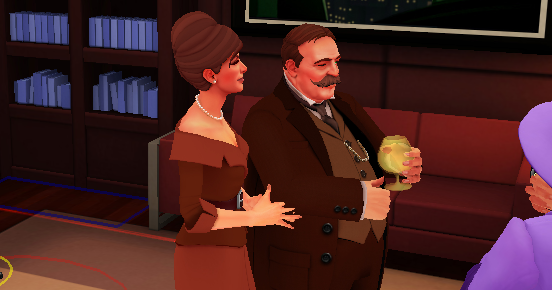Just over a year ago, SpyParty developer Chris Hecker revealed the first new character animations on the game’s development blog. The first reaction was “these are gorgeous!” The second was usually “what’s the game going to be like once these are implemented?”
One of the things any beta tester has to contend with is that most of their arcane knowledge of the game may (nay, will) be rendered useless by the game’s evolution. This is the price of getting to help shape the game’s direction, and it’s a pretty fair trade. It’s disconcerting to have to change the way you play after thousands of games or hundreds of hours, but most of the turmoil is temporary. There’s a short adjustment period, and then most players settle right back into the same skill tier they were in before.
The switch to new character models, however, feels fundamentally different. I said this a year ago when they were released, and my opinion was reinforced when I played a “mixed art” set with kcmmmmm (IE: new character models mixed in with old, on an old map) back in September.
There’s a distinct possibility that the new art, and its corresponding talking animations, cannot be adjusted to the way previous changes have been. They have the potential to fundamentally and permanently change the entire game.
The old art talking animations were identical from character to character. A skilled Sniper is capable of quickly glancing at a half-dozen old art characters in a conversation and processing who is and isn’t talking. The exaggerated, consistent movements could be noticed in the Sniper’s peripheral. With the new art, achieving the same result takes a precious second, especially given that there are not only unique talking animations for each character, but several per character.
These are the obvious ways in which it will be harder to identify actions, and they’ll be mitigated as dedicated Snipers memorize talking animations (though even holding them in your head figures to increase cognitive load substantially). But there’s a subtler consideration: color.
One of the reasons Snipers can see things they’re not entirely looking at with the old art, or notice things at a glance, is because most characters a) wear clothing that stands out against the untextured backgrounds, and b) wear bright colors that are highly distinct from one another. You have little to no chance of confusing the debonair fellow on the left with the thrift store enthusiast beside him:

Because the new art is striving for a level of realism, the clothing must reflect this. Yellow blazers and bright purple dresses are rarely seen in real life, and even less so at upper crust cocktail parties.
And on top of this, we add another layer: the environments, which are no longer gray, textureless slabs that create a clear contrast with the characters’ clothing. So we have darker, less distinguishable clothing, closer skin tones, and less contrast between the characters and the environments. The end result is that these two, despite their widely varying body types, become a brown blur:

Evidence on the effects remains anecdotal, but top players like krazycaley already feel it’s made their sniping more difficult. And amusingly, virifaux, his polar opposite in terms of play style, has talked openly about the need to make the talking animations more consistent and noticeable. The data so far is scant, and doesn’t show any significant shift, but this could simply be because SpyParty players are an adaptable bunch, and that the new art is changing the way they win, if not the frequency. This certainly jibes with my personal experience.
Whether or not these changes are good or bad in the long run remains to be seen. What’s already evident is that they change the way the game is played.
Excellent post, I wholly agree with what you’ve said, including the part it’s unknown if this is good or bad.
One of the catchphrases for SpyParty is that it’s a game of perception. New art seems to emphasize that to an extreme. However, the difficulty in seeing things also makes it so the sniper isn’t juggling as much in his brain’s memory.
Knowledge-management in old-art is like trying to fill a bathtub with a firehose. You’ll be struggling to retain all the water.
Knowledge-management in new-art is like trying to fill a leaky bathtub with a garden hose.
I say this with the perspective that, it is IMMENSELY fun to juggle information.